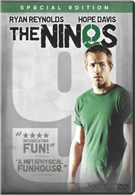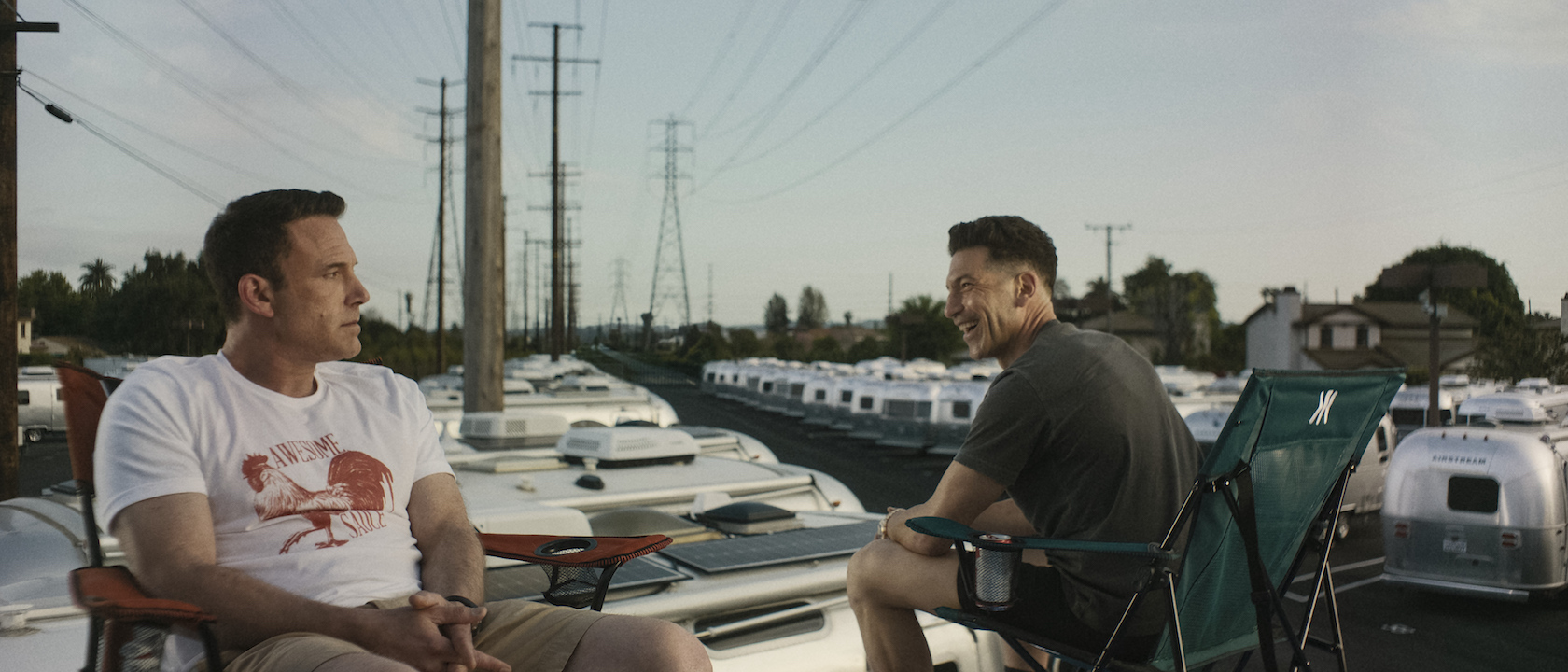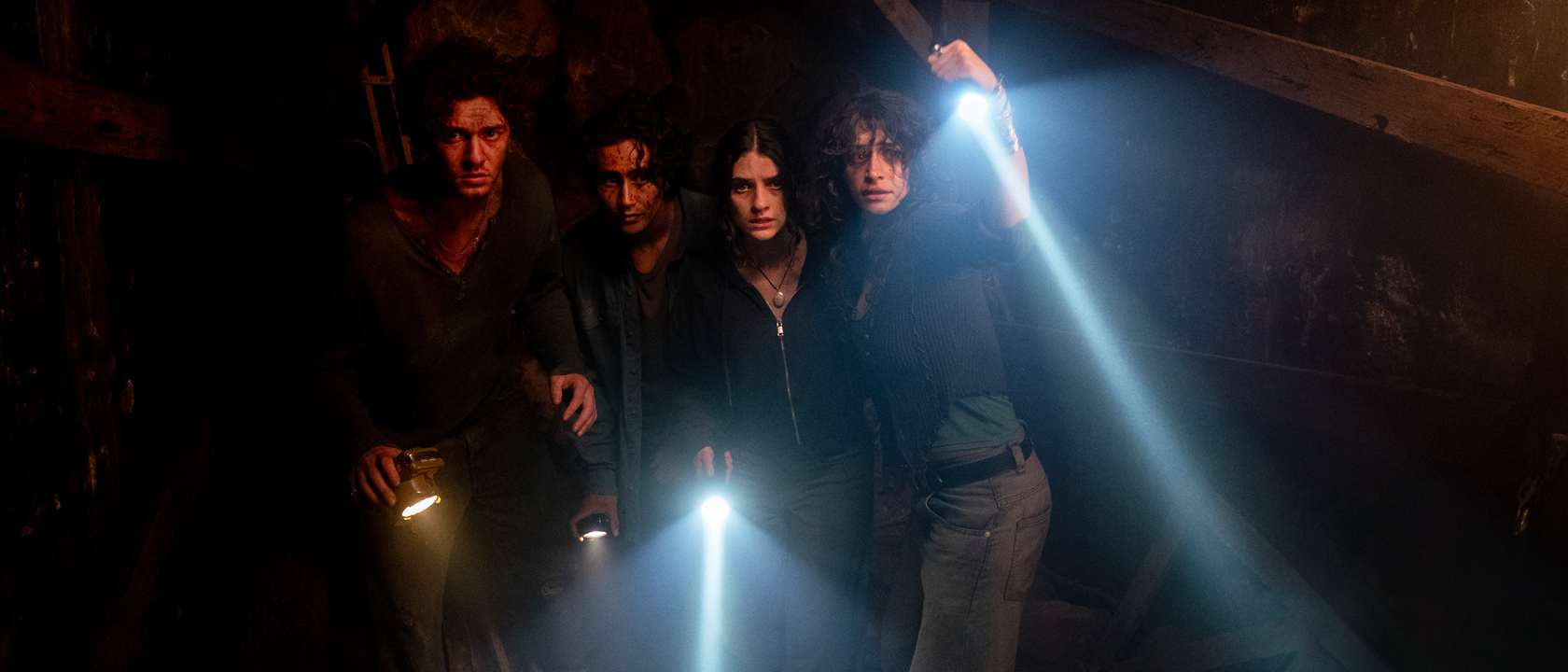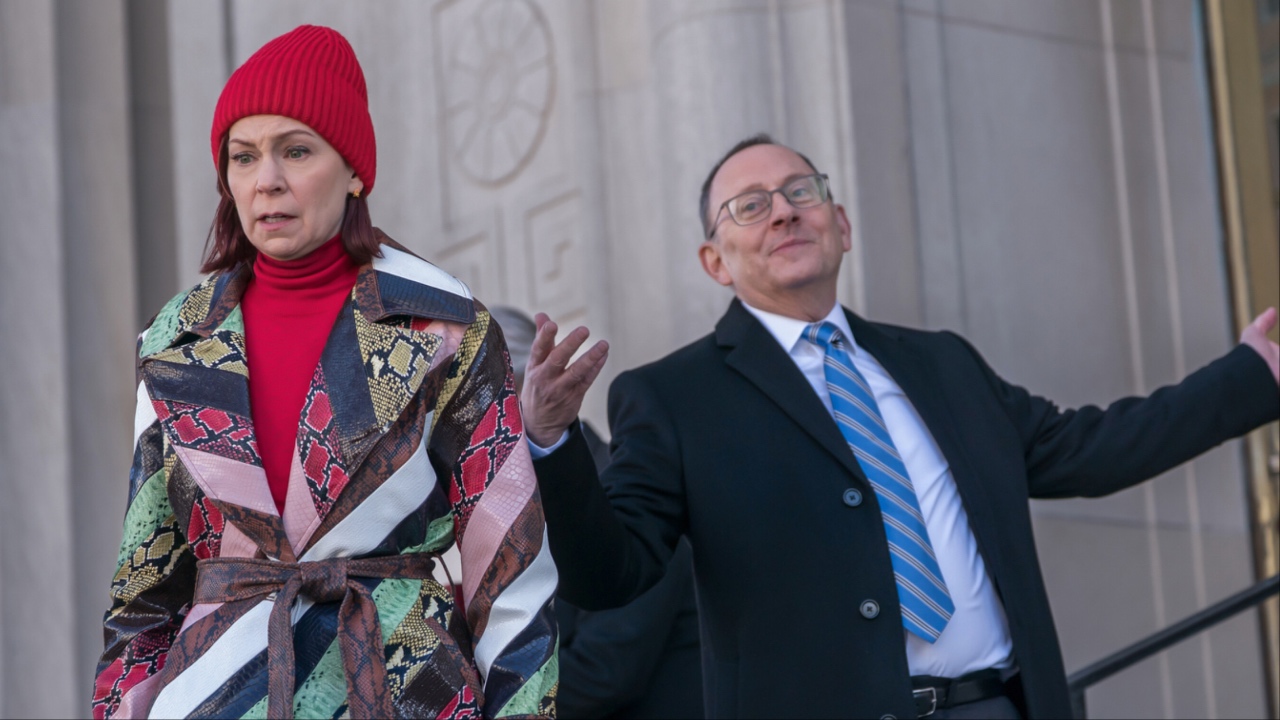The first line of dialogue in The Nines has Gary (Ryan Reynolds) pull his Toyota Prius up to a street hustler and yell out his window, “Hey, do you sell crack?” Now I don’t know about you but even though I’m pretty sure I know where to buy crack, I’m VERY sure that I have no idea how to use it. And neither does Gary who follows up his purchase by asking a hooker (Octavia Spencer) that very question: “Hey, do you know how to use crack?” This shockingly real moment is one of the great pleasures to be found in big time Hollywood screenwriter and blogger John August’s directorial debut. It’s the kind of film that is so hard to describe that it usually ends up with a series of labels like, “Lynchian” or “Kaufmannesque”. Although it has a certain sense of the surreal, it’s not as sinister or openly inexplicable as David Lynch and even though it plays around with the concept of “life=art=life”, it’s also not as meta obsessed as Charlie Kaufmann. At least not as much as Adaptation which dissolved completely into a violent genre movie for no other reason than to demonstrate the writer’s cleverness. With The Nines, August may be peddling some absurd new age “secret”, but at least it allows him the benefit of stronger and more coherent storytelling. Though the film is puzzling, very few viewers will be left puzzled by the end.
As a screenwriter, August has written some very successful mainstream films such as Big Fish,Corpse Bride, Charlie and the Chocalate Factory and both Charlie’s Angelsfilms. This is like none of them. What it does superficially resemble is his first produced script, Go. That picture presented a series of entangled tales in a back and forth manner similar to Pulp Fiction. The Nines takes this idea a step further by seeming to be very thinly connected, while slowly revealing a much more complex interlocking structure by the end. It’s really three short films that tell a single story, but a single story that is more metaphorical than literal. Ryan Reynolds, Melissa McCarthy, and Hope Davis appear in all three but as seemingly different characters who possess some of the same characteristics and face similar choices, although the opening credits show Reynolds in the process of separating a single green thread into three strands and then intertwining them into a single bracelet on his wrist. Reynolds is seen wearing this bracelet in all three stories, hinting at his singular identity throughout.
The three short episodes are titled, “The Prisoner,” “Reality Television,” and “Knowing.” In the first, Reynolds plays Gary, the star of a terrible CSI-type tv show called Crimelab. After burning down his house and getting into a crack-fueled car crash, he’s placed under house arrest by a mysterious publicist named Margaret (Melissa McCarthy) and becomes involved with a strange sex-starved wife and mother next door named, Sarah (Hope Davis). What looks to be a satire on Hollywood excesses takes an odd turn as Gary becomes obsessed with a note he finds in the house to “look for the nines.” He does and discovers that the number exists everywhere, but “only if you look for them”. His reality reaches the literal breaking point leading us into “Part Two: Reality Television”.
Part two presents Reynolds as Gavin, a thinly disguised alter ego of writer-director August. He’s a TV writer working on the pilot of a show called “Knowing” and star of his own Project Greenlight styled reality series. The pilot stars Melissa McCarthy as herself, a member of the Groundlings improv troupe and regular on The Gilmore Girls. McCarthy is good friends with Gavin, who wrote the show for her. Of course, an evil TV exec played by Hope Davis pressures him to dump her for another actress, leading Gavin to another break with reality and the final story, “Knowing” which is the TV pilot itself. In it, Reynolds plays Gabriel, a video game designer, hiking in the Hollywood Hills with his wife Mary (McCarthy again) and their mute young daughter Noelle (Elle Fanning). They return to their car to find the battery dead and their cell phones without service. Seeking help, Reynolds gets more than he asked for from a hiker named Sierra, once again played by Hope Davis.
The film’s structure is not based on cause and effect but rather on associations made between the events of one story and the other. Certain lines of dialogue repeat themselves such as “Is that all there is?” and each story places Davis and McCarthy as women on opposite sides, vying for Reynolds’ awareness. There are hints that each exists in the same story universe with Gary under house arrest in a house owned by TV writer Gavin, who is busy shooting a pilot which we’ll later see.
What keeps the film from becoming a real headscratcher is that, unlike most similar stories, this never becomes a question of what is real or unreal. It’s clearly all unreal; all a series of created existences through which Gary/Gavin/Gabriel must journey to find his way aided and/or blocked by Margaret/Melissa/Mary and Sarah/Susan/Sierra. Like the repeated “game” in Run, Lola, Run, Reynolds is made to encounter the same questions and themes over and over. August is clearly presenting his various character groupings in a tense relationship with their creator and of course, asking us to see all creation as a struggle between Man and God. Though this sounds pretentious, it’s really not, since August is a good enough storyteller to know that it’s better to tell it more like Rod Serling than Jean-Paul Sartre.
August is also a good director of actors and his cast is what keeps this film from running off the tracks. Hope Davis is normally given glasses and a potato bag for wardrobe and still manages to be attractive, but here August allows her to display a more aggressive sexuality and, just as McCarthy says on the commentary track, there’s just something interesting about her. You can’t keep from staring at her. McCarthy herself, who many will know from her years as a regular on The Gilmore Girls, is simply wonderful as well in a part clearly written for her by her friend Gavin-uh-John August, I mean. It’s no surprise that she excels with the comic material although the best dramatic scene in the film belongs to her - a scene where Gavin tells her that he has decided to replace her to keep his show from being shelved. There’s just something here, some extra emotional pain, that seems as though both August and McCarthy know this moment well.
The real surprise, though, is Ryan Reynolds. Always a likable actor in zany comedies, Reynolds looked to be on track for “actor most likely to replace Chevy Chase in a new Fletchmovie.” There’s always been more to his performances than a winning smile and abs of steel, something real underneath that Chase could never quite find between the hits of coke and painkillers. The Nines is his best work to date. Presented in Dolby Digital 5.1 and anamorphic widescreen (1.85:1 aspect ratio, with one scene in 2.35:1), The Nines mixes together several different film and video mediums to tell its story. The opening is more indie in tone and thus, Super 16mm film is used. The second story is supposed to be a reality TV show and this is shot on standard def digital video. The pilot, “Knowing” is shot as pilots usually are, on 35mm film. The DVD transfer handles the changes well, moving from desaturated drama to cheery colorful satire.
The DVD comes with a huge menu of extras including two feature length commentary tracks. The first of these is a track recorded by Ryan Reynolds and John August and originally intended to be a free download on the film’s website for use during the film’s theatrical release. The idea was to allow audience members to load it onto their iPods and have a DVD experience in the movie theater, presumably on their second attendance. It starts off with the promise that it won’t be scene specific since that would require some elaborate synching to get everyone to start their Ipods at the same time in the theater. But immediately it becomes very scene specific and somehow, even synched on the DVD, most of the comments are slightly out of synch with the action onscreen. This creates a strange confusion as a comment about an effects shot is made over a simple close-up of Reynolds but was referring to a shot a few minutes earlier. Outside of this technical flaw, the track itself is relaxed and entertaining with Reynolds and August fully engaged in discussing the film’s various levels of storytelling. At one point, Reynolds reveals that he hates reading scripts and usually doesn’t read them all the way through, the exception being The Nines which riveted him from page one. This may explain how he ended up in some less than stellar films. Keep reading, Ryan.
The second track features August again with his old pals, Melissa McCarthy and editor Douglas Crise. The three collaborated on August’s short film God and discuss how the work on that film led to the development of The Nines. August also explains a bit about how his nightmare experience on the TV show D.C. inspired much of the film.
"Summing Up 'The Nines'" is a 14 minute making of featurette, that seems initially to be the standard studio press kit offering. But the difference here is a reduction in the self congratulations and an honest discussion about the actual production of the film.
13 minutes of deleted scenes show that August and Crise had the good judgment to delete them and the alternate ending seems like an early draft of the final one. Neither is really great, but the one that made it into the final cut is the better of the two.
"Script to Storyboard to Screen" is exactly what it sounds like. I’m not sure what this segment is supposed to offer viewers but many DVDs feature it. It would be more interesting to see how the plans were more fully developed and realized onset with the director having a new idea or the actors finding a more interesting way to play the scene than that suggested by the storyboards. This is almost never shown however, merely presenting a process of how everyone stuck to the original plan.
A stills gallery is included, as is the short film God that August made in 1998. It features McCarthy as an early version of her character Margaret in The Nines talking to her good friend “God” on the phone everyday like a junior high school relationship. The film chronicles their ups and downs and how McCarthy even befriends the devil to spite God. This can be viewed with commentary by August, McCarthy and Crise as well.
Lots of other trailers are presented on the disc, but somehow The Nines trailer failed to make the cut. It’s too bad because a glimpse at how the studio tried to market this very unusual picture would’ve been quite interesting. The Nines doesn’t really lend itself to a 2 minute montage and a narrator intoning “In a world gone numerical, one man…blah, blah, blah…” But it would be funny if they tried.
I Thought Elsbeth's Bloody Judge Crawford Twist Had To Be A Fake Out, But Now I Have Questions For The Season 2 Finale
A24’s The Legend Of Ochi Hired A YouTuber Making Bird Sounds In His Basement To Work On The Movie, And I'm Wowed By The Whole Process
Charli XCX Is Not Going To Be In Greta Gerwig's Narnia Movie After All, But I'm Psyched That We're Still Getting A Barbie Reunion Thanks To New Casting











